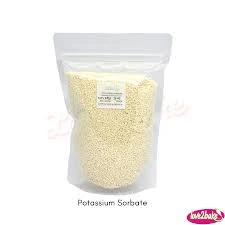
Exploring E476 Food Additive and Its Role in Modern Cuisine
Understanding E476 Food Additive and Its Implications
Food additives play a significant role in the modern food industry, enhancing the texture, flavor, and appearance of many products we consume. One such additive is E476, also known as Polyglycerol Polyricinoleate (PGPR). Understanding E476 involves looking at its sources, uses, safety, and potential health effects.
Understanding E476 Food Additive and Its Implications
One of the primary advantages of using E476 in food products is its ability to reduce viscosity, thus facilitating easier manufacturing processes. This is especially crucial for large-scale production where consistency and quality are paramount. Moreover, because of its emulsifying properties, E476 can help in reducing the need for additional fats, which may contribute to lower caloric content in certain products.
e476 food additive

Despite its benefits, E476, like many food additives, has faced scrutiny regarding its safety and health implications. Regulatory agencies, including the European Food Safety Authority (EFSA) and the U.S. Food and Drug Administration (FDA), have assessed E476 and deemed it safe for consumption within established limits. The acceptable daily intake (ADI) set by these authorities suggests that E476 does not pose significant health risks according to current evidence.
However, there are ongoing discussions about potential allergic reactions and the long-term effects of consuming synthetic additives. While E476 is generally recognized as safe, some individuals may experience sensitivities or adverse reactions, particularly those with underlying health conditions or allergies. It’s essential for such individuals to read food labels and be mindful of the ingredients included in processed foods.
As consumers become more health-conscious and aware of the implications of artificial additives, there is a growing demand for natural and organic alternatives. Many manufacturers are compelled to reformulate their products to eliminate synthetic additives, including E476. This trend highlights the need for transparency in food labeling and ingredient sourcing, empowering consumers to make informed choices.
In conclusion, E476 serves an essential function in the food industry as an emulsifier, enhancing the quality and marketability of numerous products. While it is generally considered safe by regulatory agencies, consumer awareness and preference for natural alternatives are driving changes in food production. As we continue to navigate the relationship between food additives and health, it remains crucial to stay informed about what we consume and advocate for transparency in food labeling practices. Balancing the needs for food innovation with safety and health is a collective responsibility shared by consumers, manufacturers, and regulators alike.
-
Understanding Synthetic Rubber OptionsNewsApr.27,2025
-
Trichloroisocyanuric Acid: Essential for Clean and Safe WaterNewsApr.27,2025
-
Sodium Dichloroisocyanurate: Key to Safe Water TreatmentNewsApr.27,2025
-
Sodium Acid Pyrophosphate: Essential in Modern Food ProcessingNewsApr.27,2025
-
Essential Water Treatment ChemicalsNewsApr.27,2025
-
Denatured Alcohol and Its Industrial UsesNewsApr.27,2025
-
The Versatile Uses of Sodium BicarbonateNewsApr.24,2025
Hebei Tenger Chemical Technology Co., Ltd. focuses on the chemical industry and is committed to the export service of chemical raw materials.
-

view more DiethanolisopropanolamineIn the ever-growing field of chemical solutions, diethanolisopropanolamine (DEIPA) stands out as a versatile and important compound. Due to its unique chemical structure and properties, DEIPA is of interest to various industries including construction, personal care, and agriculture. -

view more TriisopropanolamineTriisopropanolamine (TIPA) alkanol amine substance, is a kind of alcohol amine compound with amino and alcohol hydroxyl, and because of its molecules contains both amino and hydroxyl. -

view more Tetramethyl Thiuram DisulfideTetramethyl thiuram disulfide, also known as TMTD, is a white to light-yellow powder with a distinct sulfur-like odor. It is soluble in organic solvents such as benzene, acetone, and ethyl acetate, making it highly versatile for use in different formulations. TMTD is known for its excellent vulcanization acceleration properties, which makes it a key ingredient in the production of rubber products. Additionally, it acts as an effective fungicide and bactericide, making it valuable in agricultural applications. Its high purity and stability ensure consistent performance, making it a preferred choice for manufacturers across various industries.











